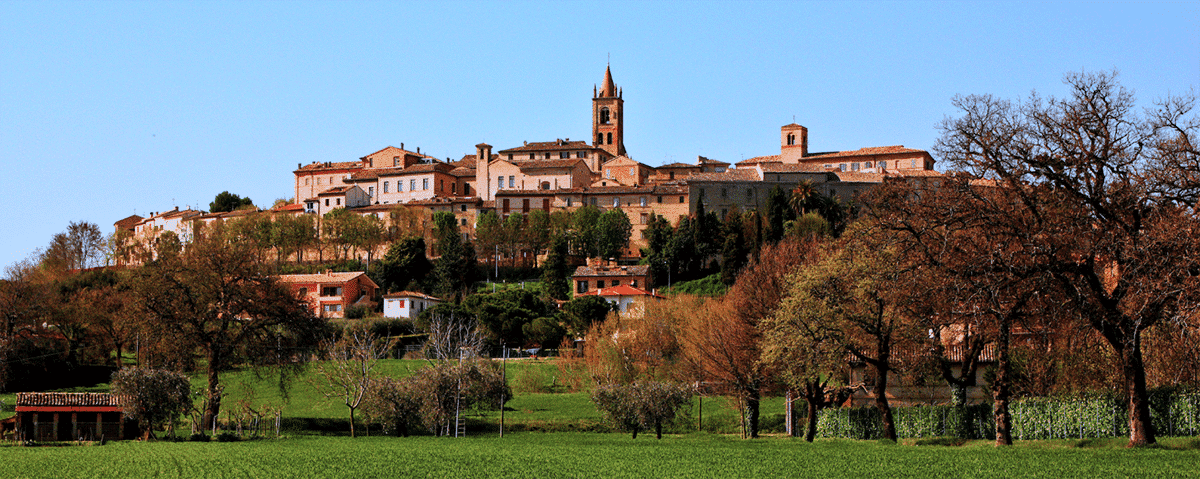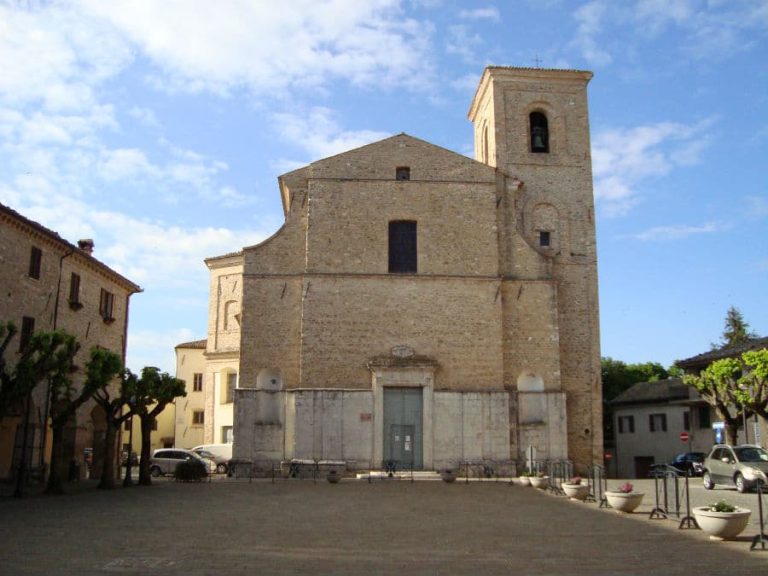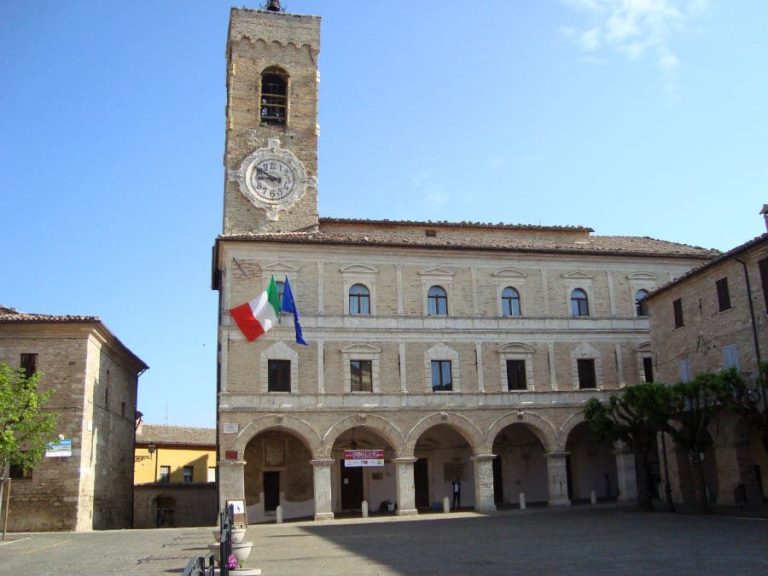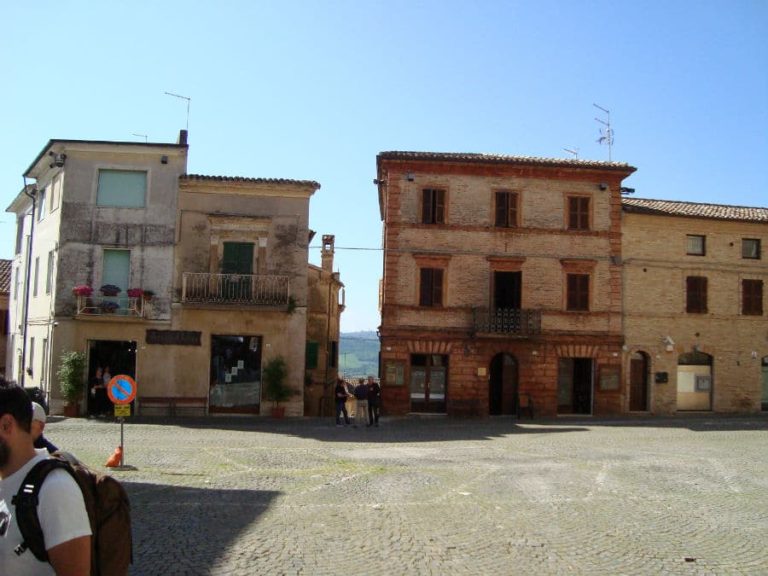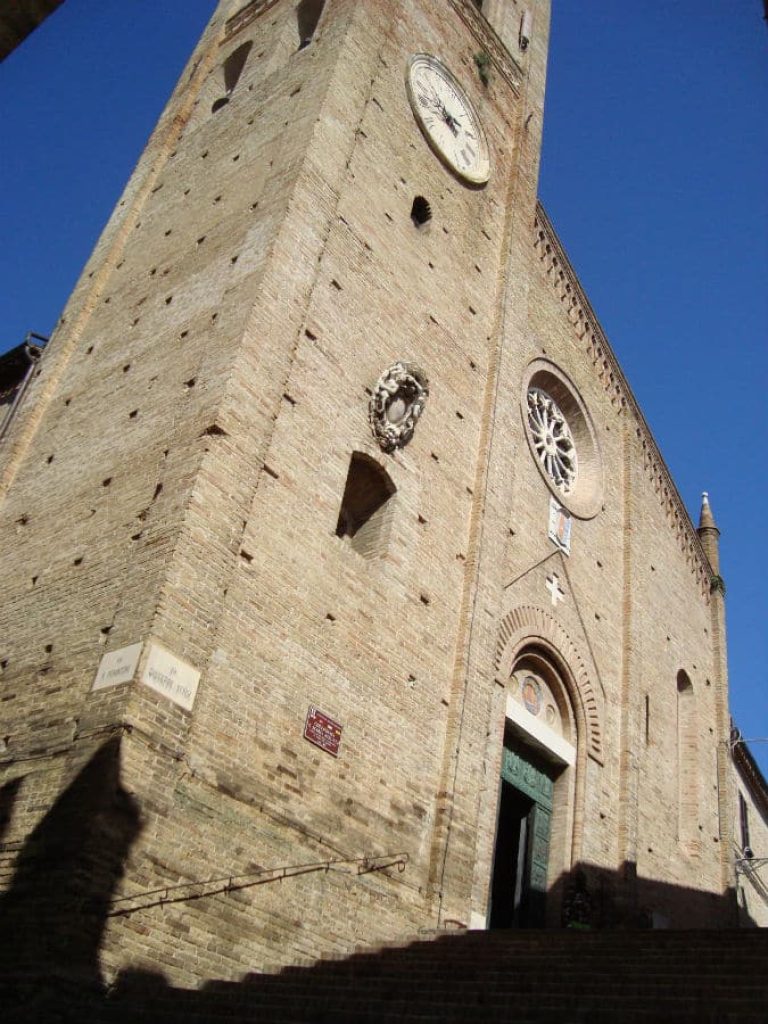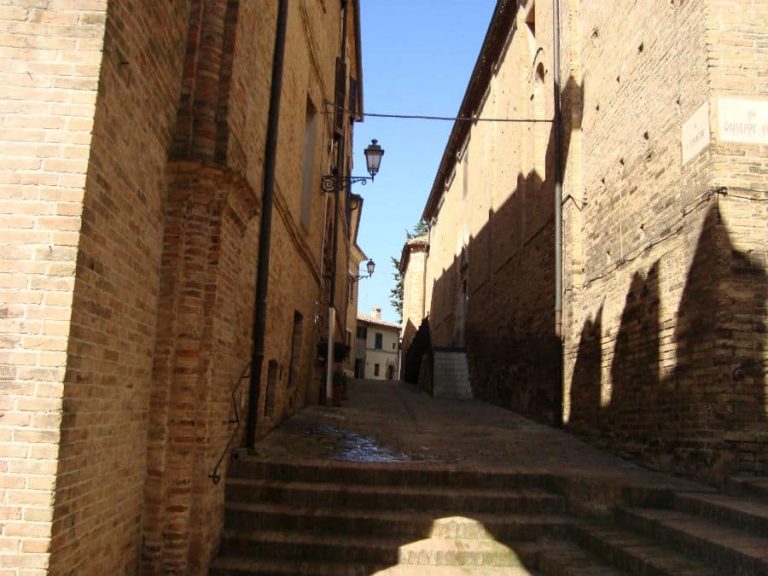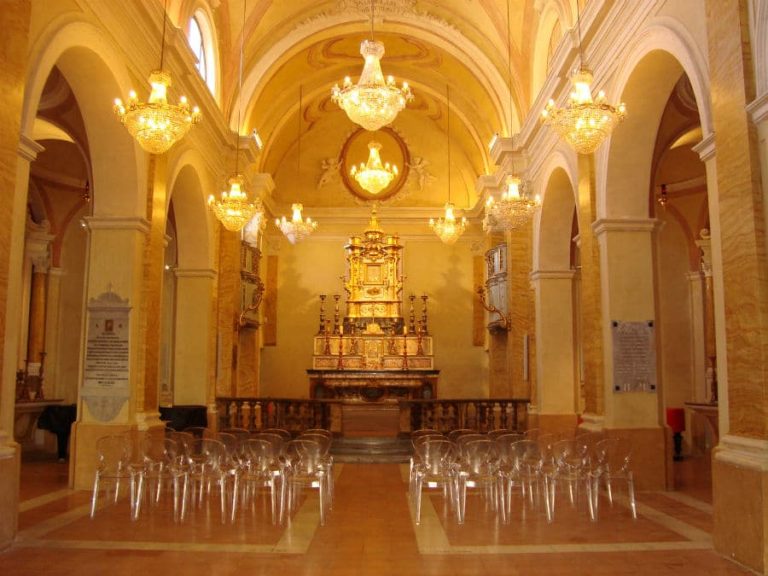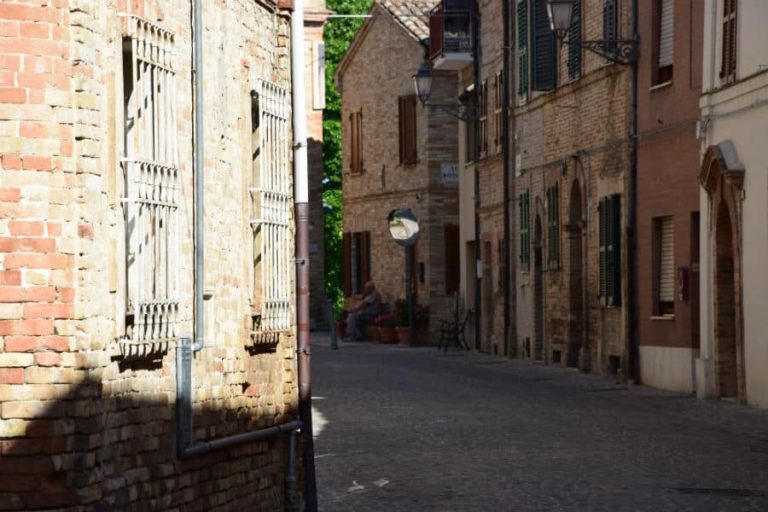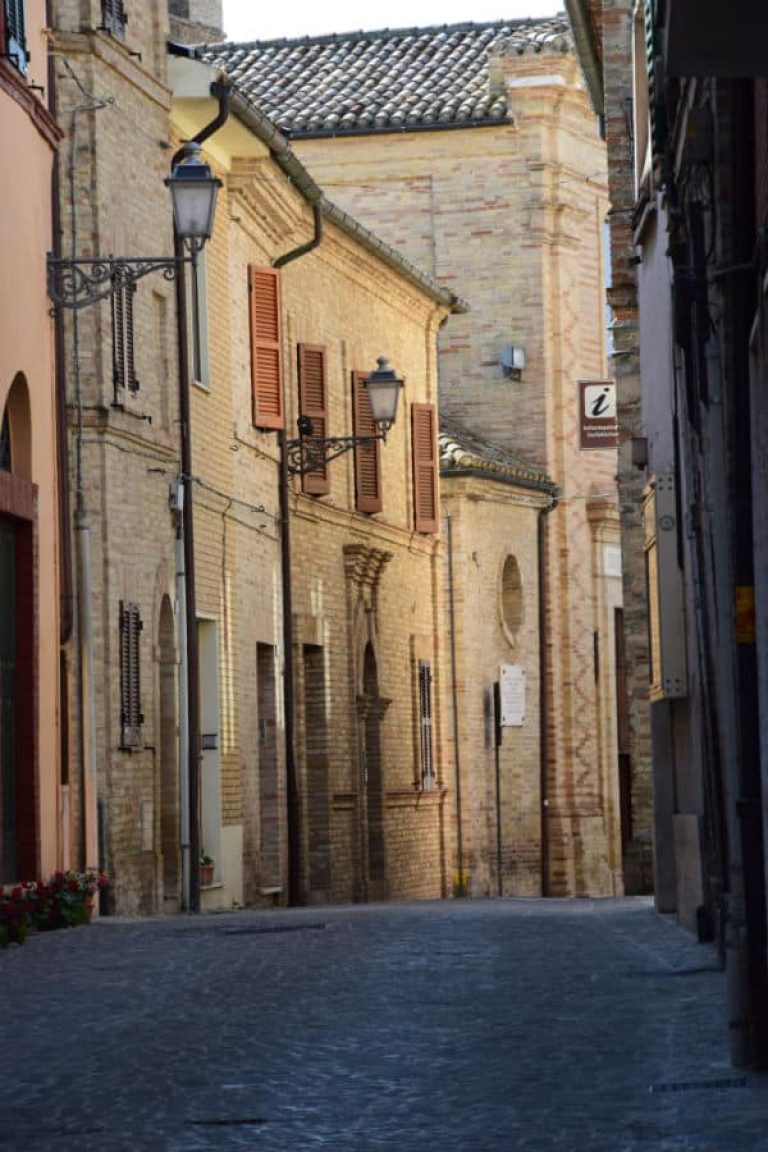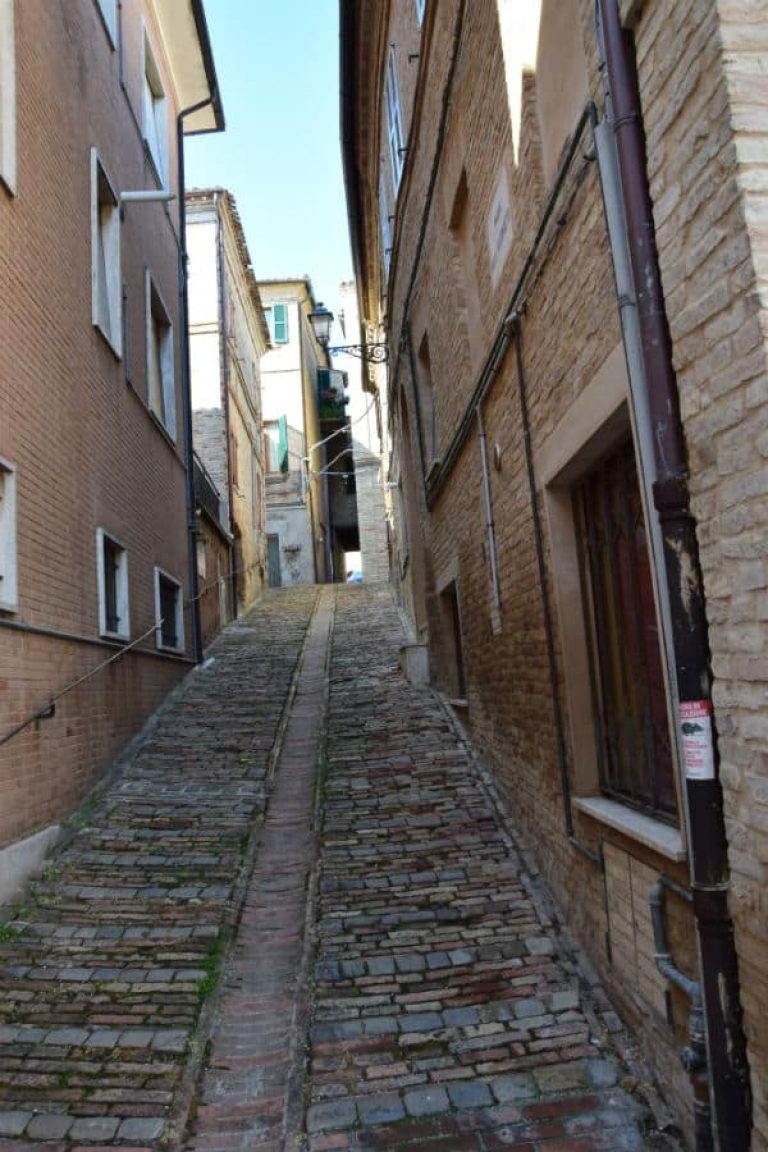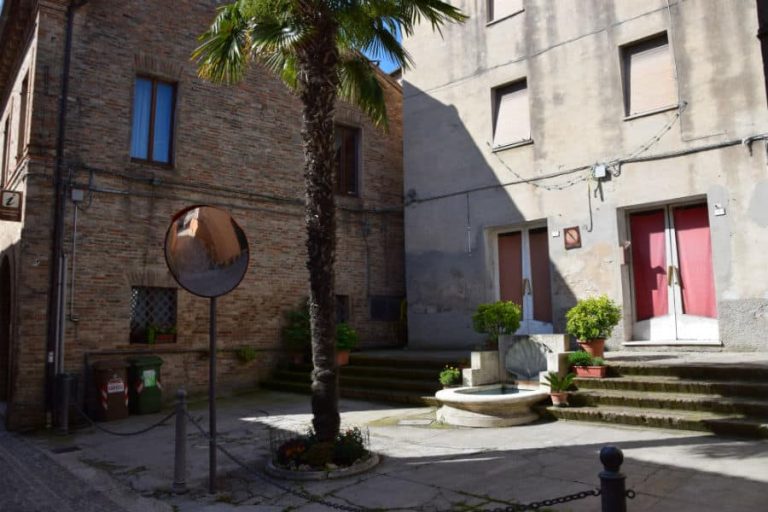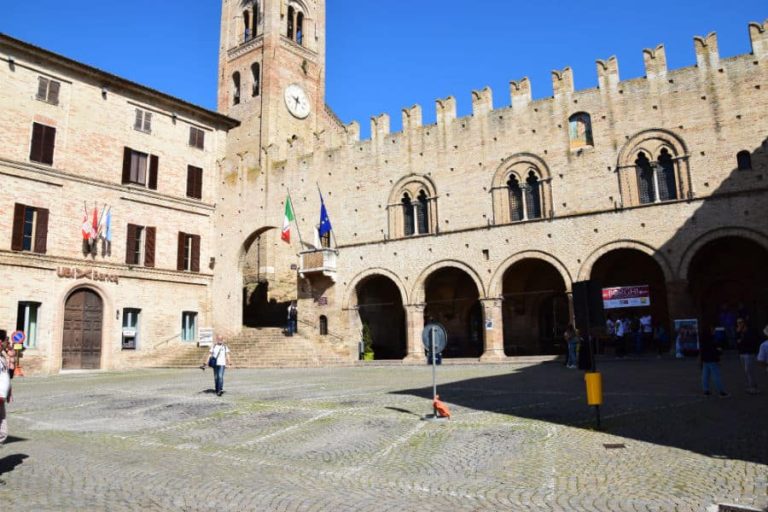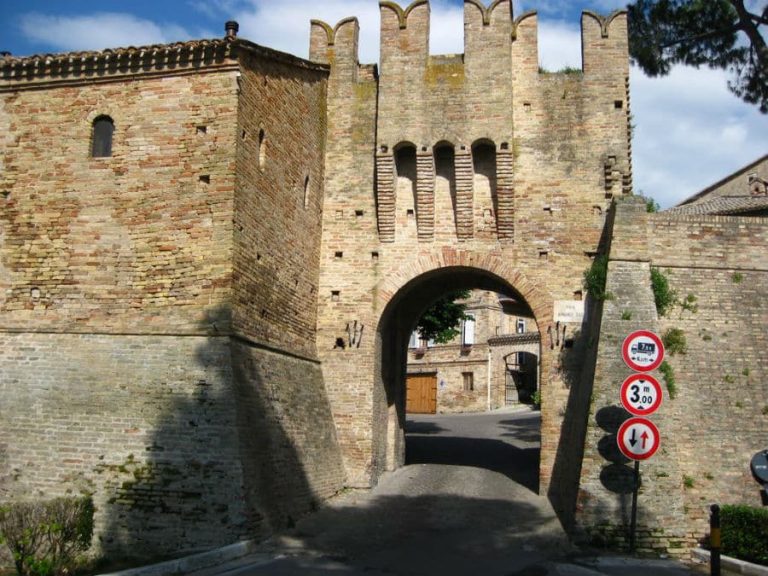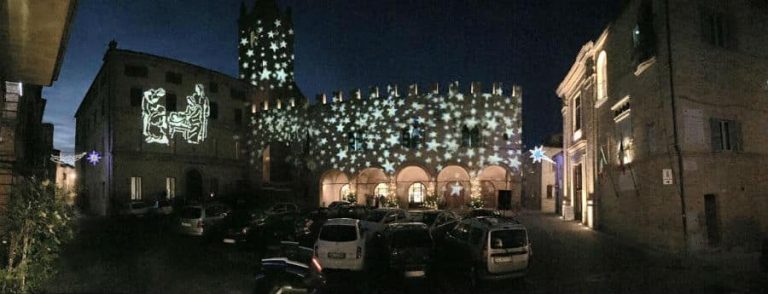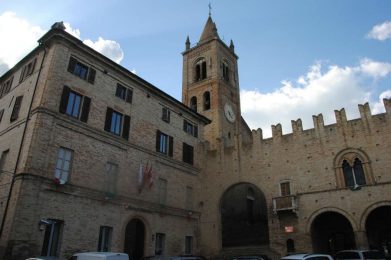Montecassiano is one of the most charming villages in the Marche region, situated on a gentle hill overlooking the valley of the Potenza River. Its historic center, gathered within a still perfectly preserved city wall, preserves a unique late medieval urban structure, characterized by concentric streets spiraling around the main square, according to a configuration called "onion leaf."
The origins of the village date back to Roman and late Roman times: according to tradition, it was founded by a gens that escaped the destruction of Helvia Recina. Its medieval history, however, is equally important and eventful: Montecassiano was a warlike center, siding with the Ghibellines, involved in bitter disputes with the neighboring towns of Osimo, Macerata and Recanati, and subjected over time to lordships such as the Malatesta, Da Varano and Sforza families. The town experienced alternating fortunes, amid rebellions, papal pardons, famines, and foreign invasions.
A village-jewel among churches, palaces and museums
The beating heart of the village is Piazza Unità d'Italia, dominated by the majestic Palazzo dei Priori, a splendid example of Marche Gothic architecture, with a crenellated crowning, balcony and a large arch connecting it to the nearby Palazzo Compagnucci. Inside is preserved the funerary stele of Cassia Orestina, evidence of the late Roman foundation.
From the square, a scenic flight of steps leads to the Collegiate Church of Santa Maria Assunta, which houses Mattia Della Robbia's extraordinary seven-meter-high glazed terracotta altarpiece: a unique masterpiece of the famous Florentine workshop.
Among the most striking religious buildings are: the Church of St. Mark, with its elegant Cloister of the Augustinians, also built as a refuge for the town council in times of war; the Church of St. John the Baptist, home of the Giovanni da San Guglielmo Museum of Sacred Art, which preserves precious liturgical objects and one of the oldest bells in the Marche region (1358); and the Church of St. James, which was once a hospital and lazaret, now the seat of the confraternities with important 18th-century Crucifixes.
Walking through time
Walking through Montecassiano is a journey into the past. The ancient city gates (San Giovanni, Armando Diaz and Cesare Battisti) introduce you to a tangle of alleys, such as Via Catena, Vicolo Santa Chiara and Vicolo San Francesco, that wind through arches, secret courtyards and picturesque views. The Cerreto Park, located close to the walls, offers breathtaking views from the Adriatic Sea to the Sibillini Mountains, in a naturalistic setting dotted with Mediterranean plants and picnic areas.
Culture, tradition and taste
Montecassiano is also a living village, thanks to events that blend history, tradition and modernity. The Palio dei Terzieri, in July, is a spectacular historical re-enactment in costume with more than 500 figures, games, ceremonies and processions that transform the village into an open-air theater. In early June, on the other hand, Svicolando Festival, one of the region's most important music and street art events, conceived and organized entirely by the town's youth, is staged.
Finally, Montecassiano is also synonymous with authentic flavors: the sughitti, an autumn dessert made with must, cornmeal and walnuts, the star of a much-loved festival in October, stands out above all.

